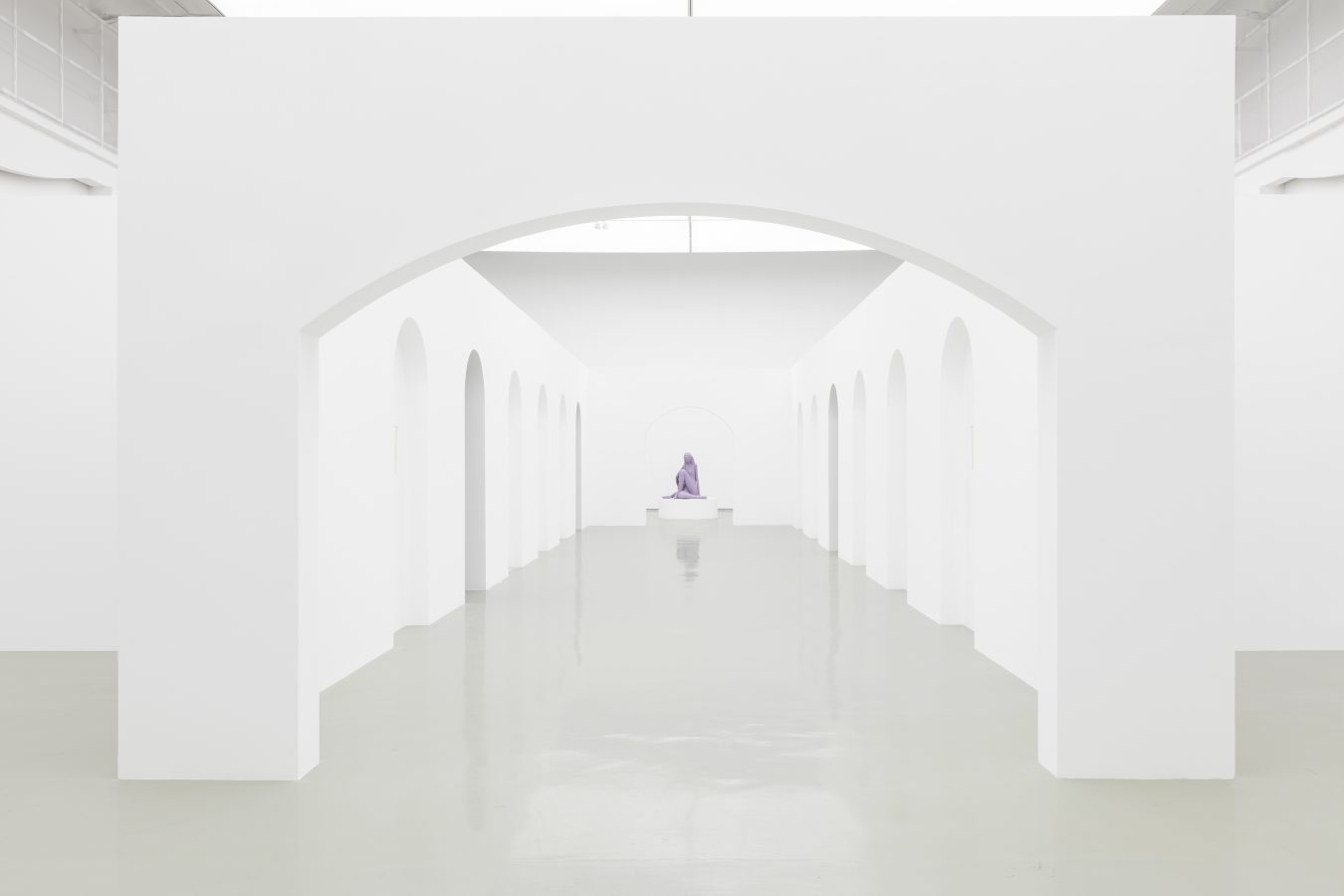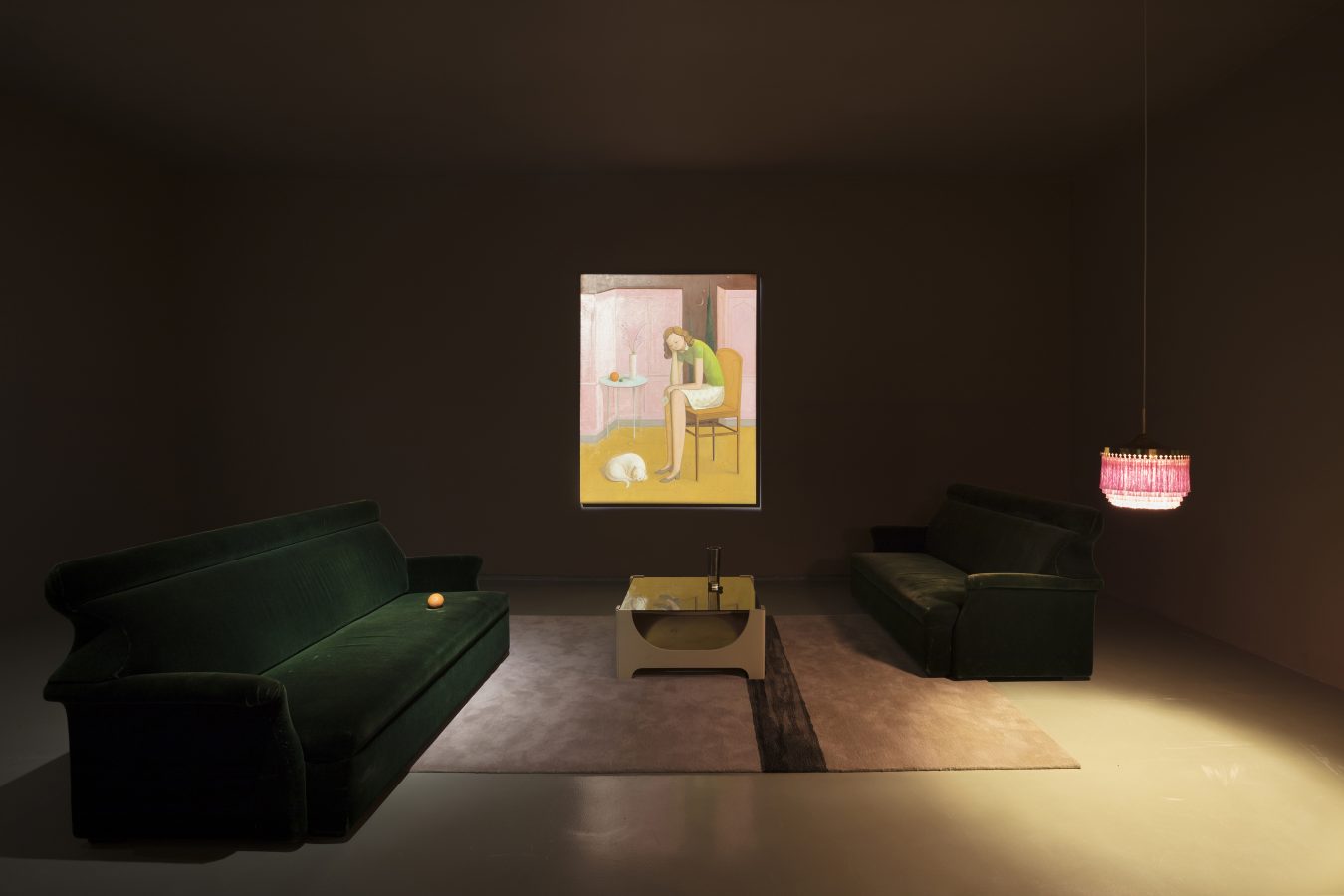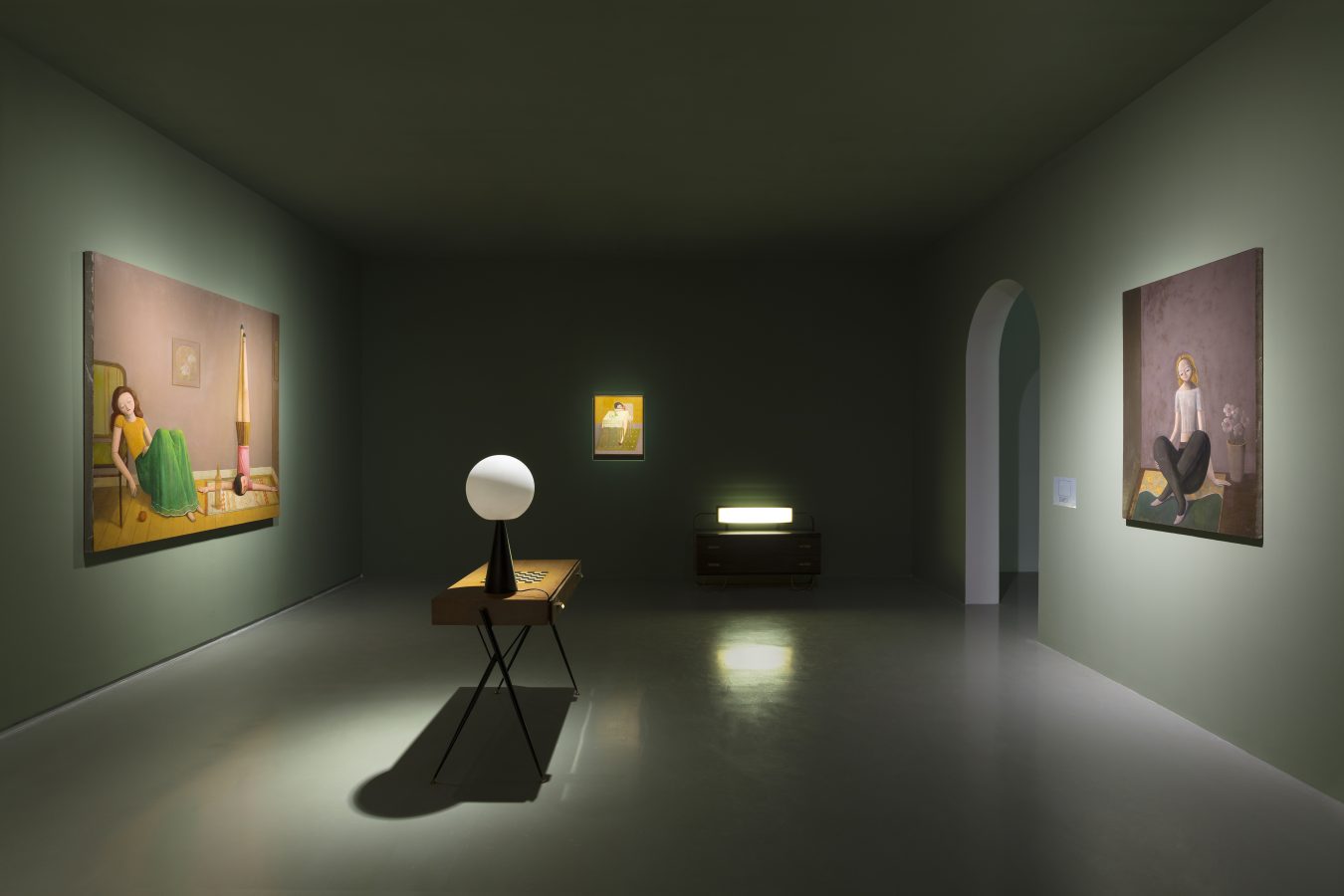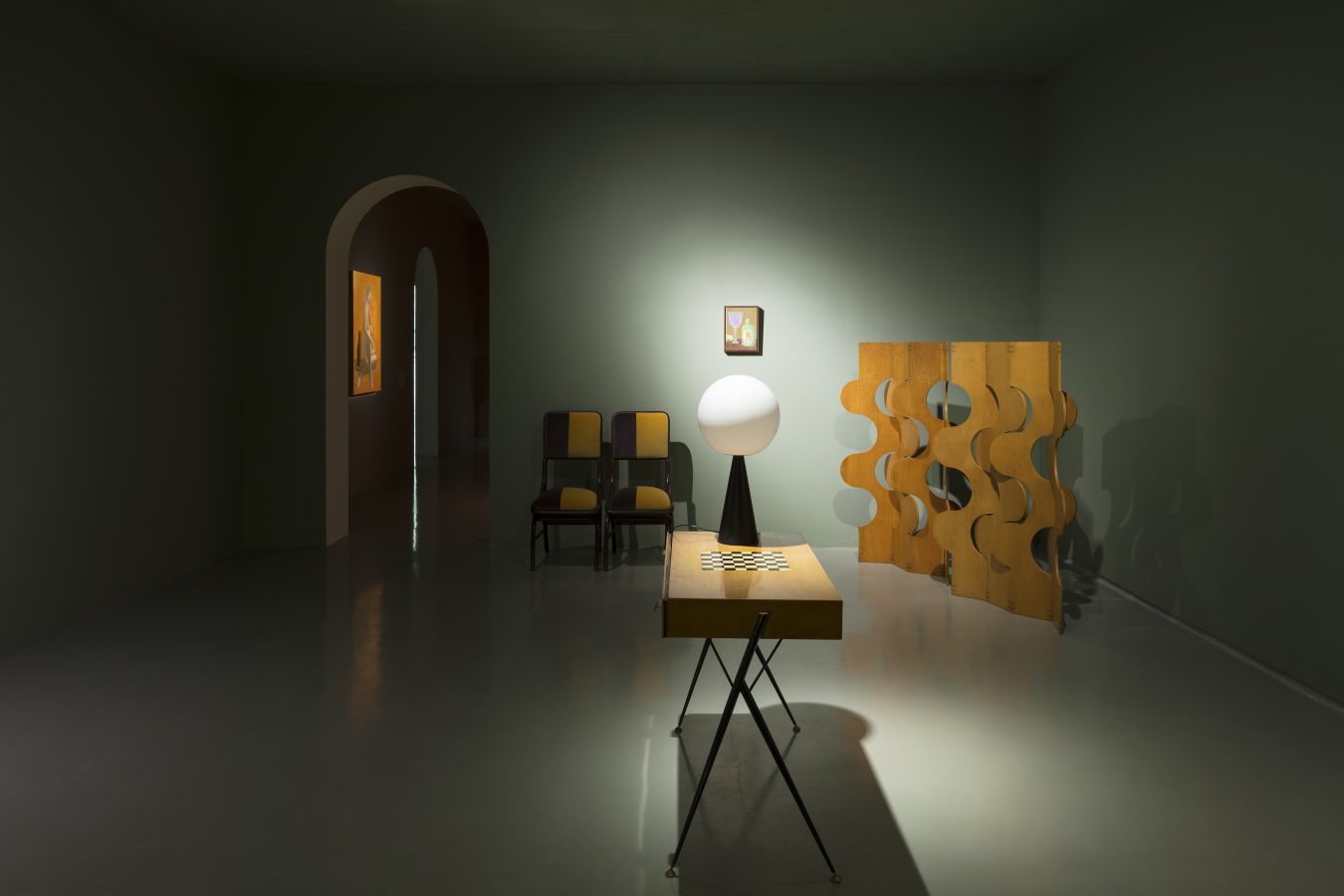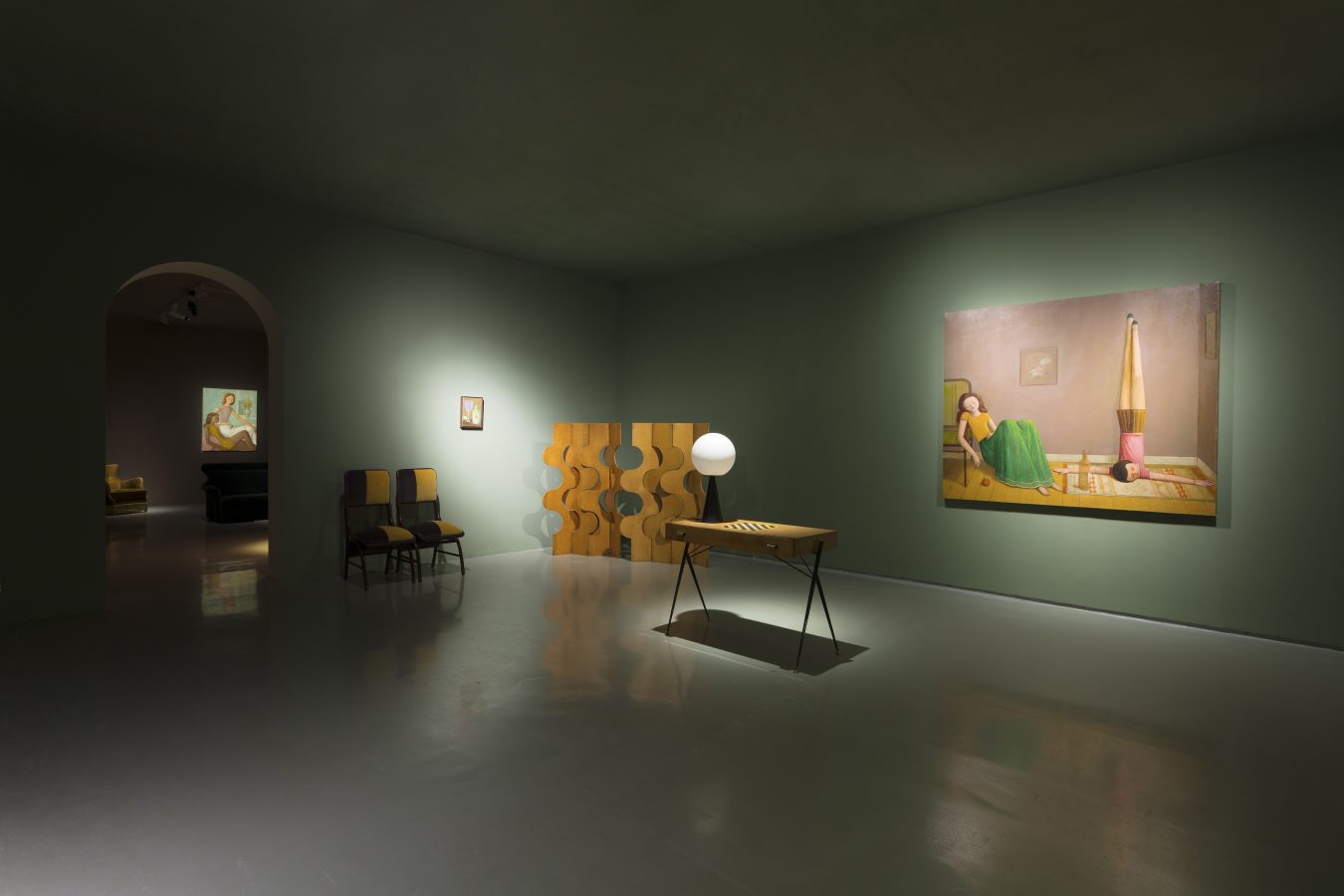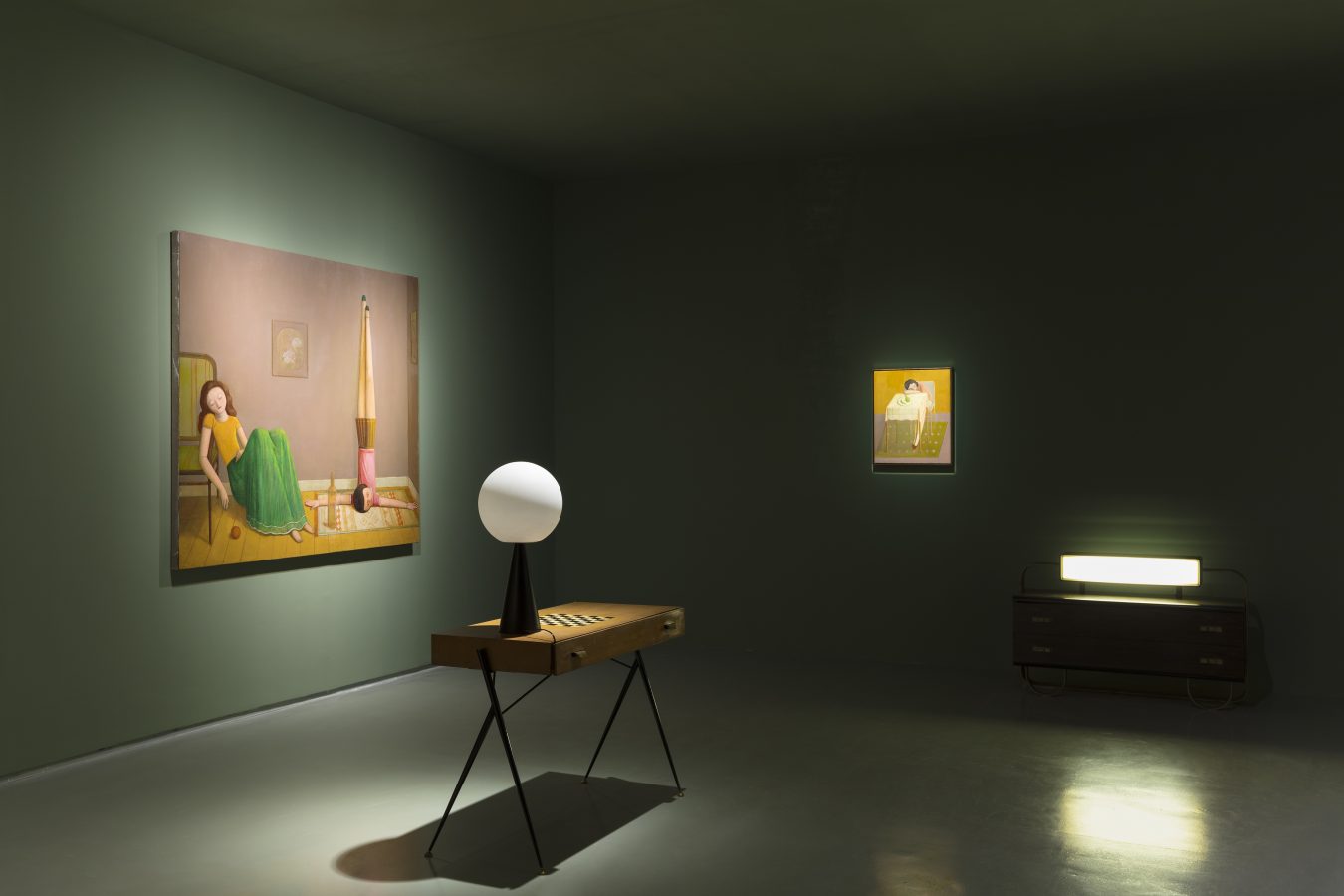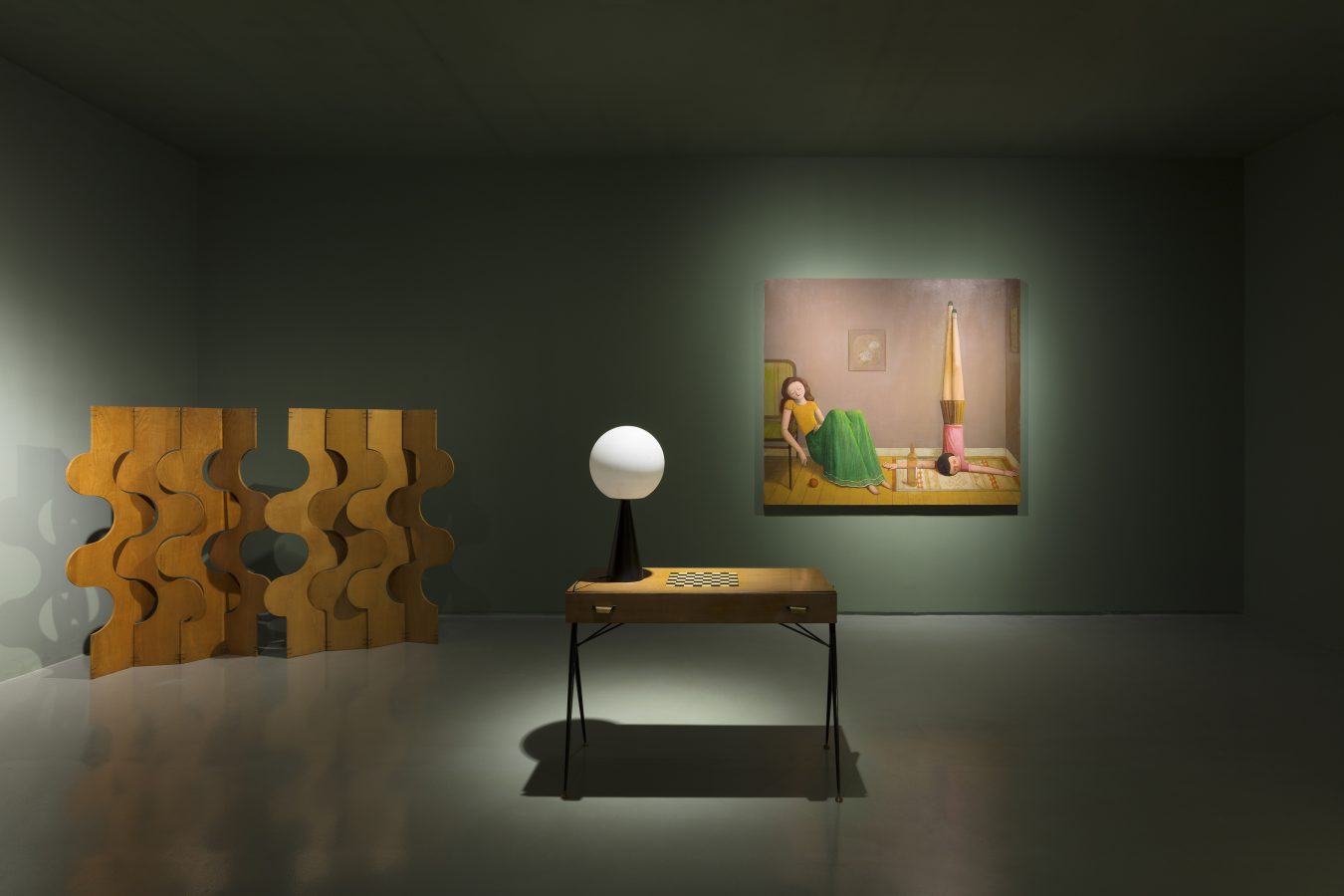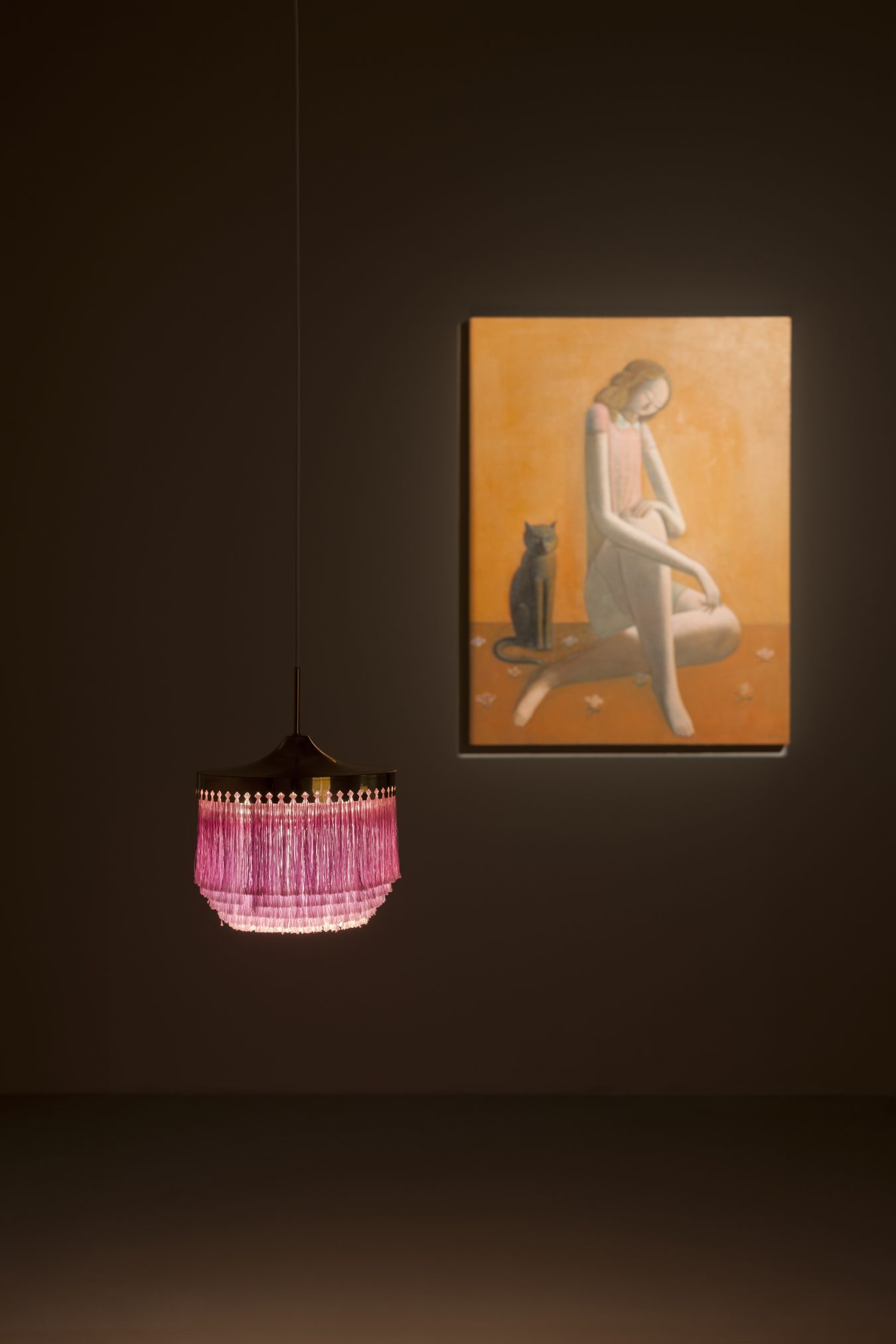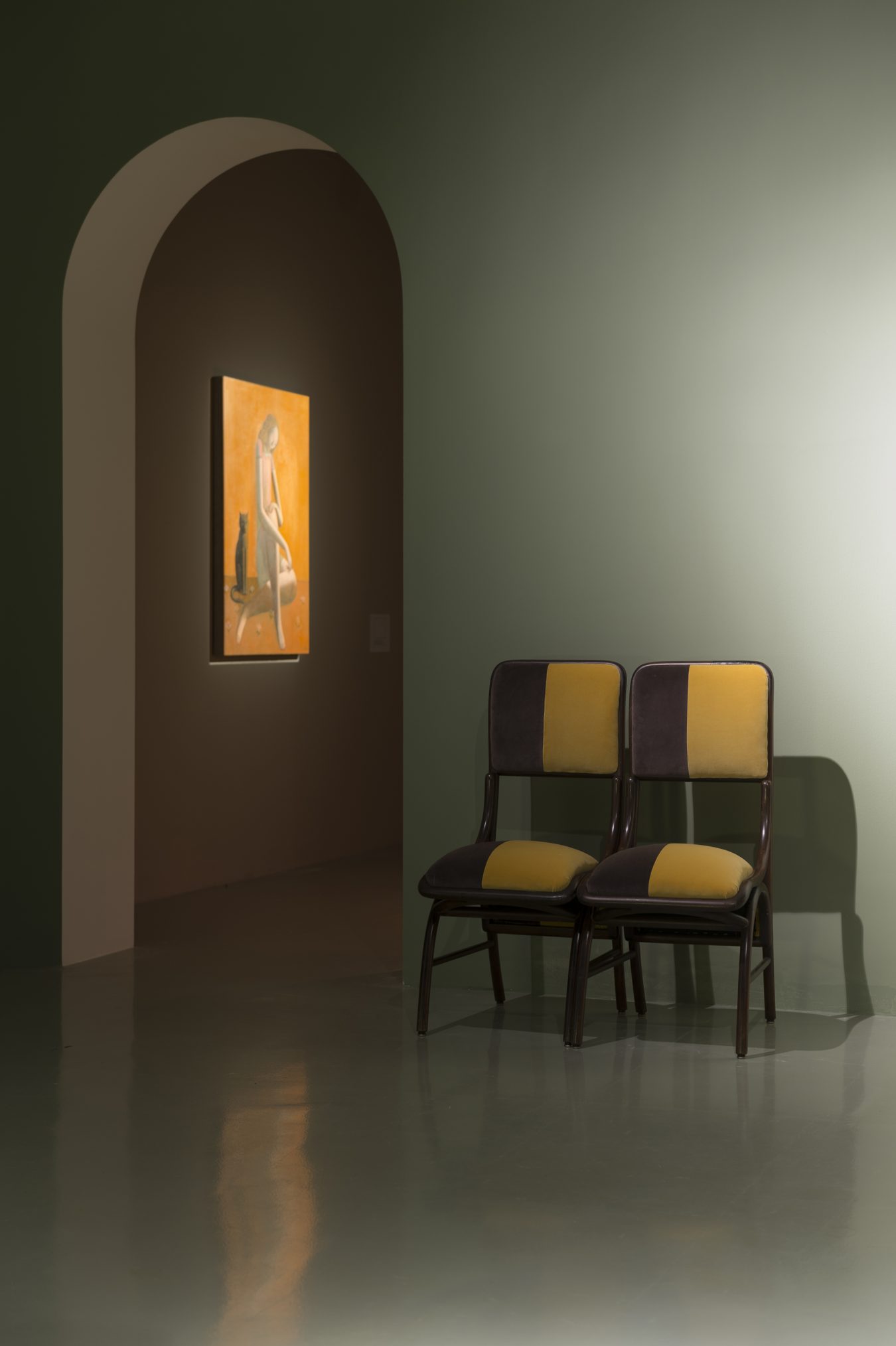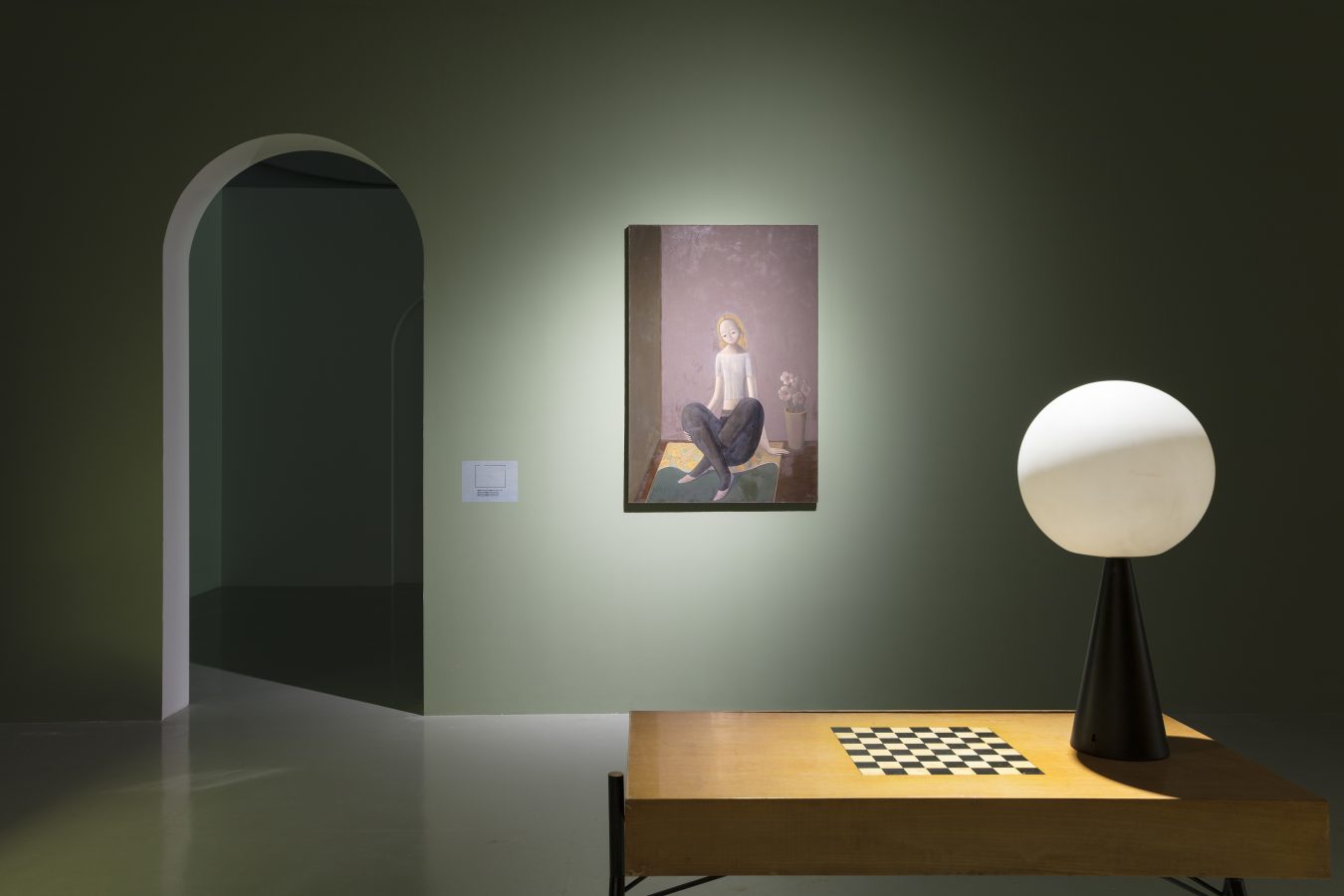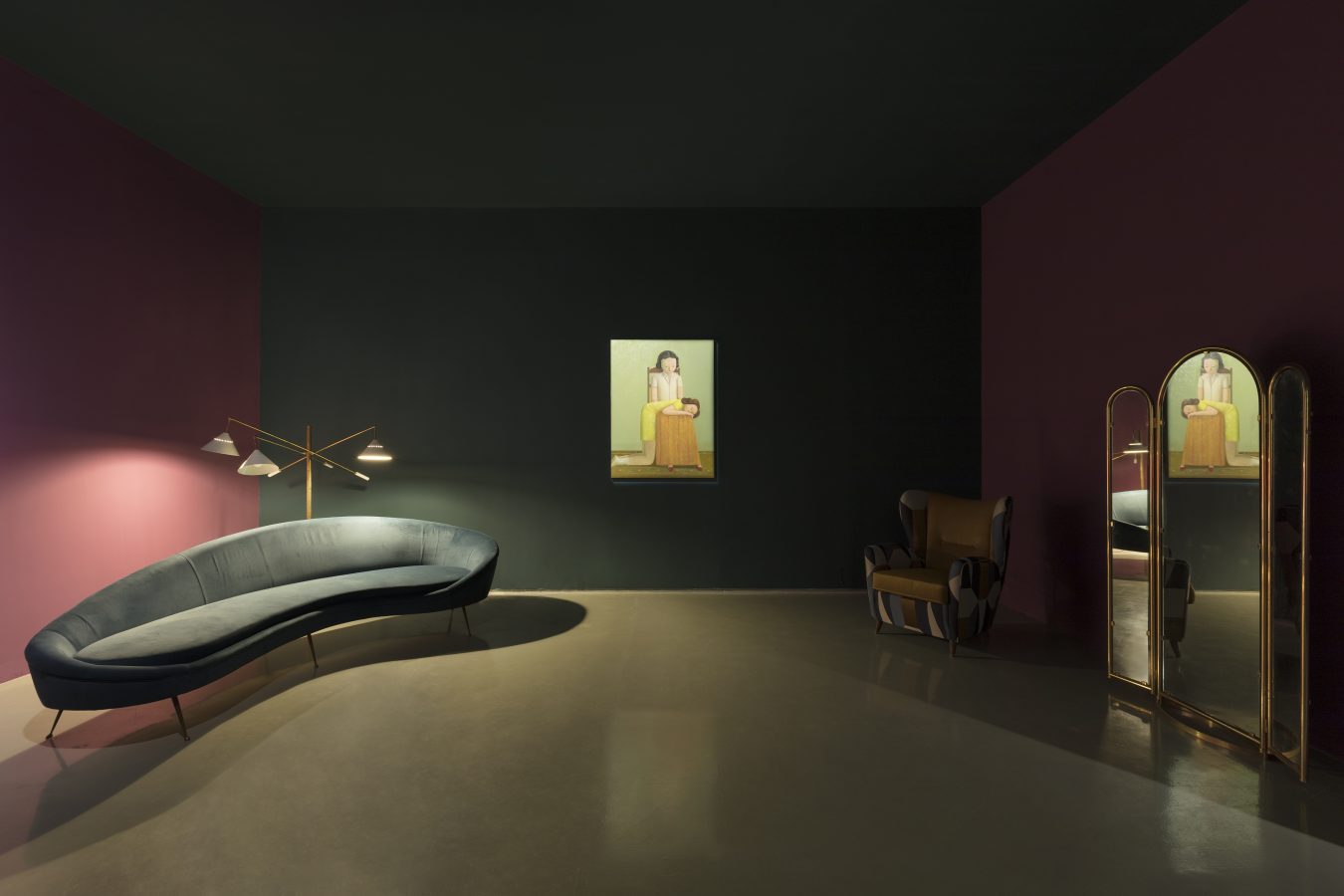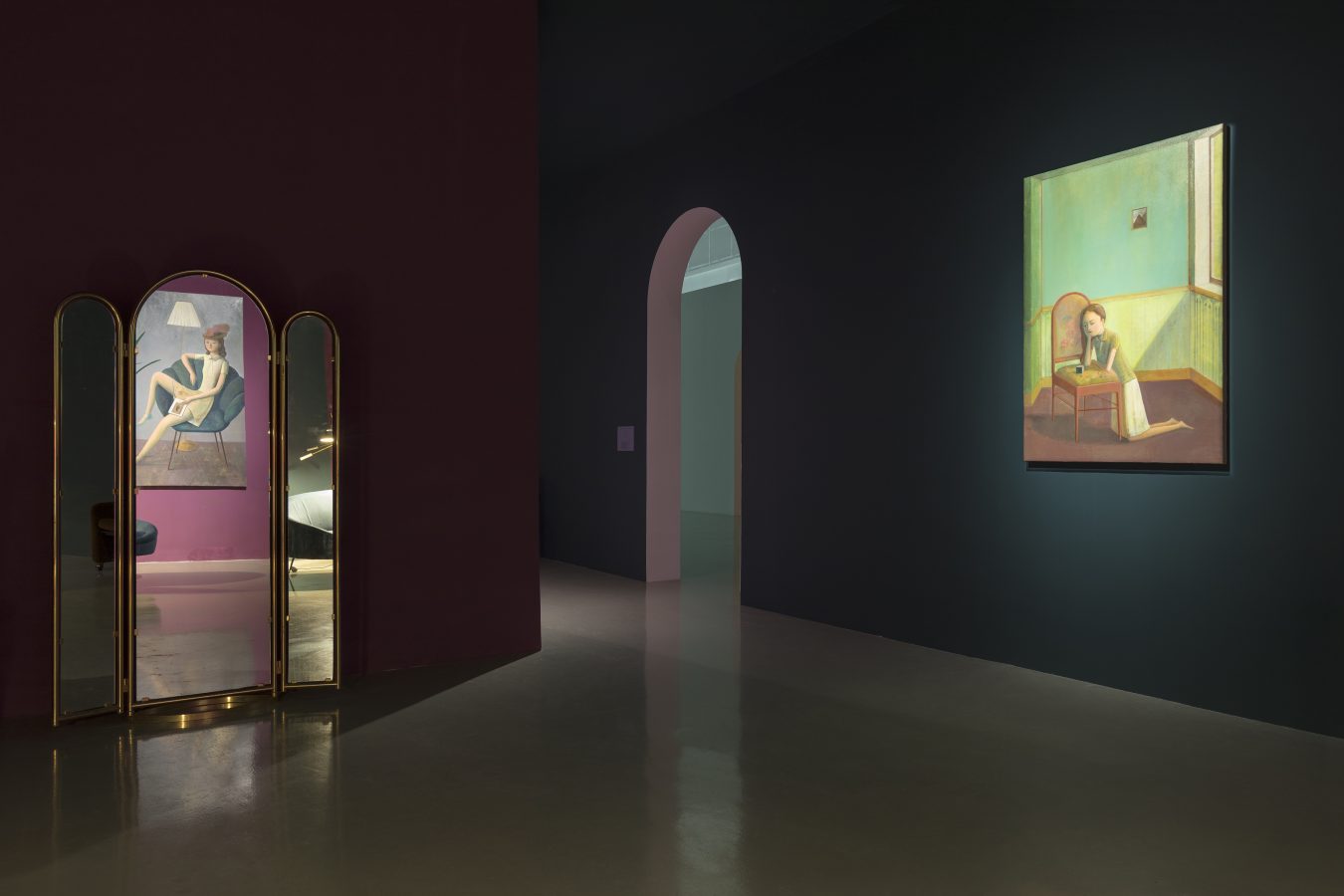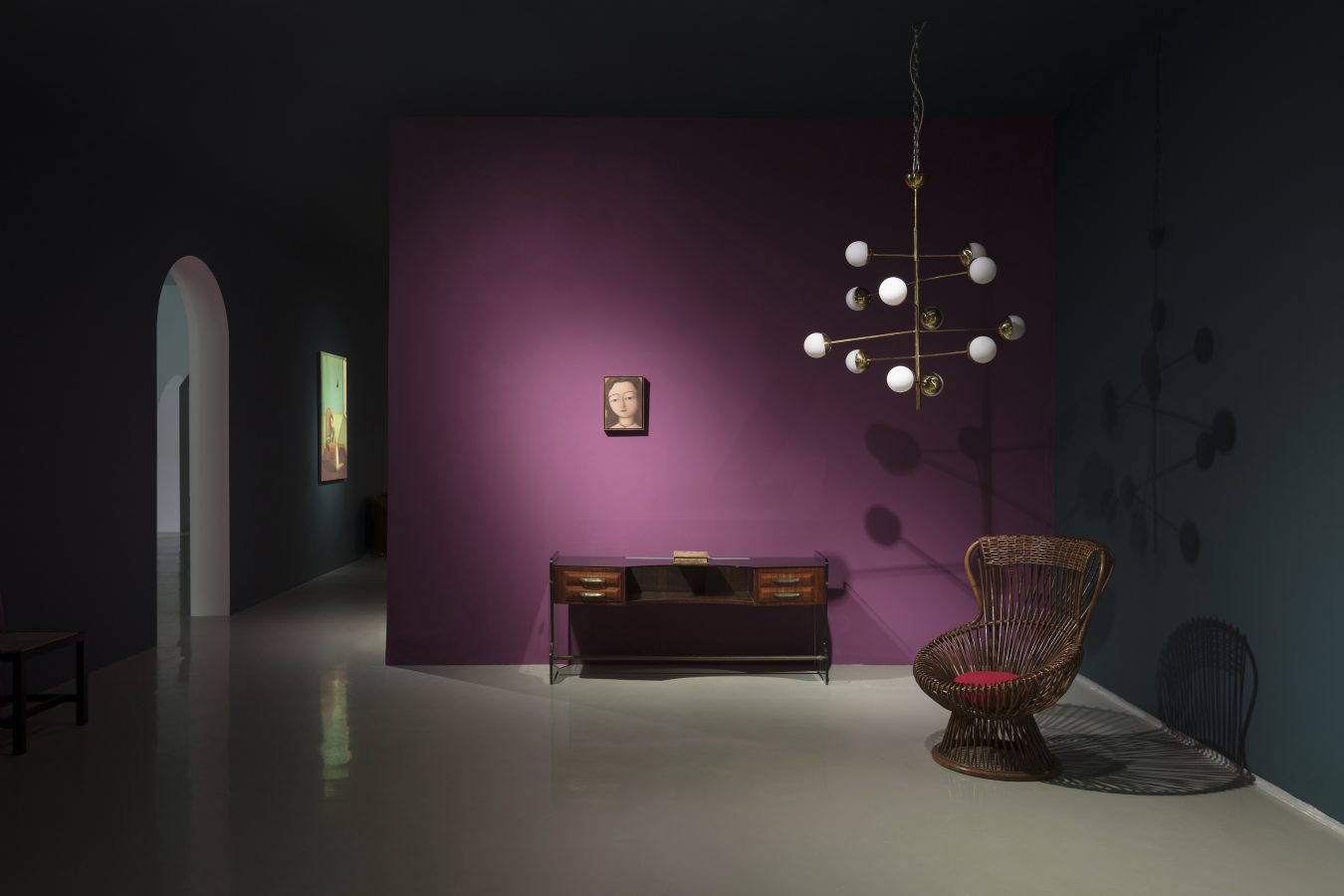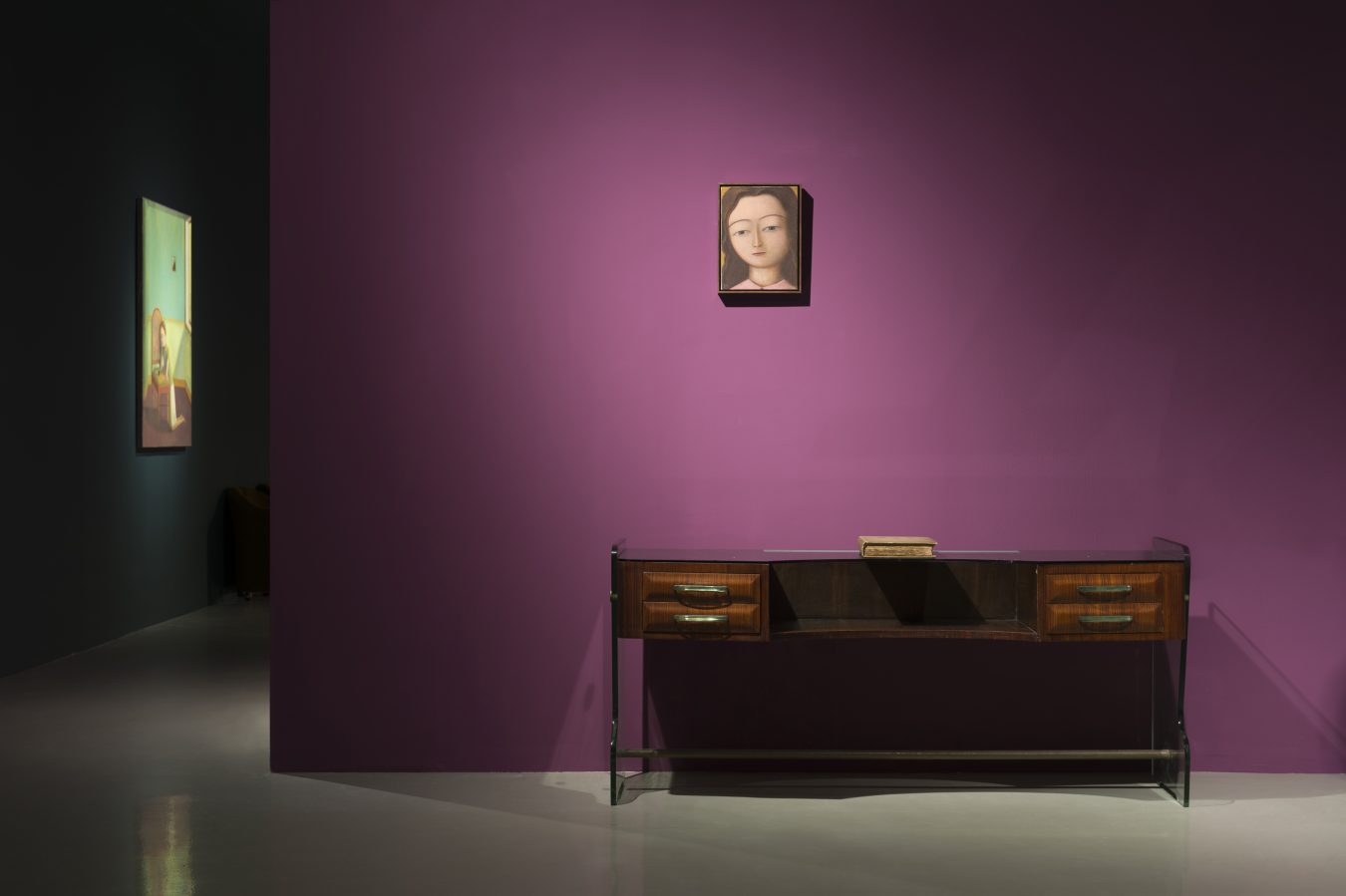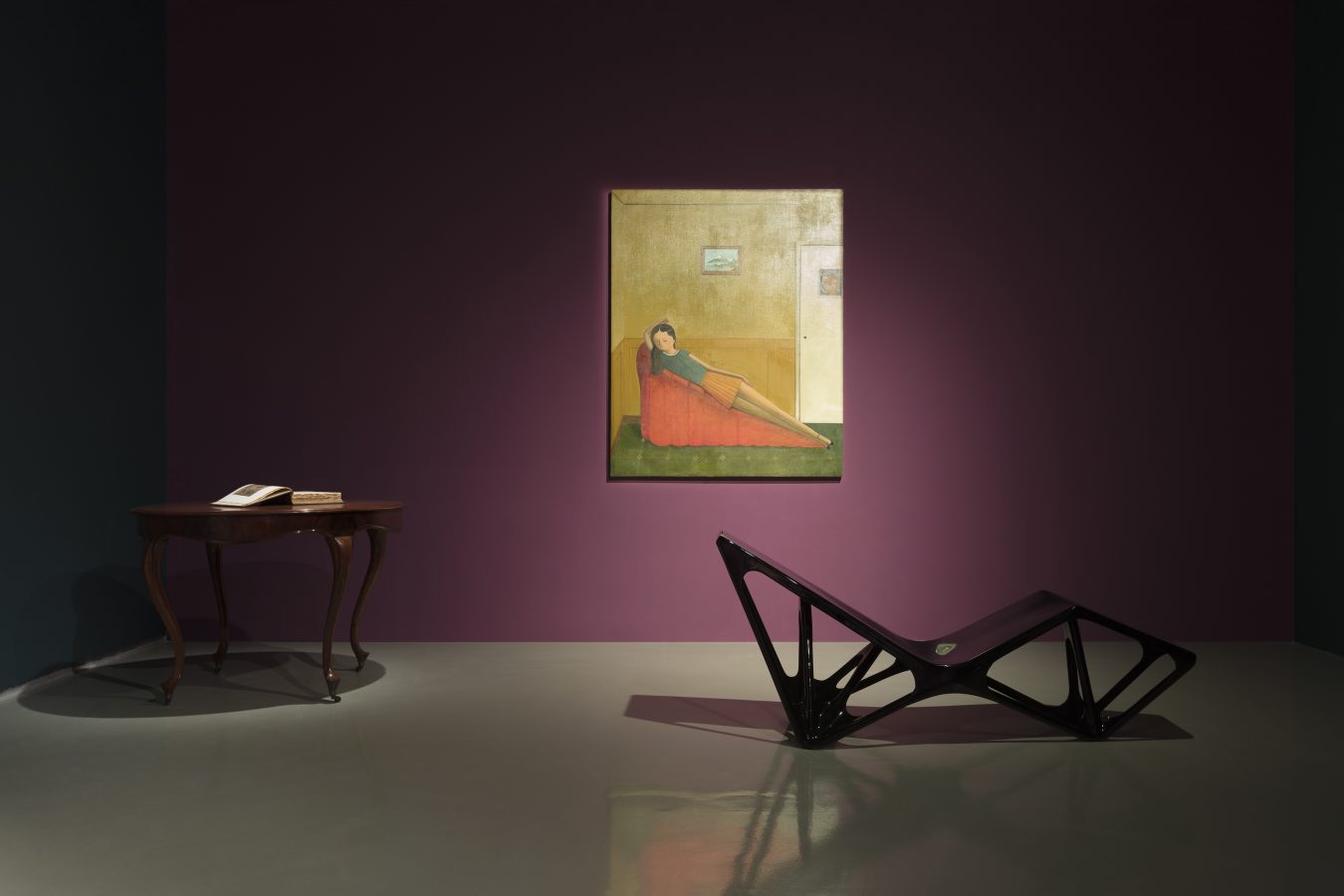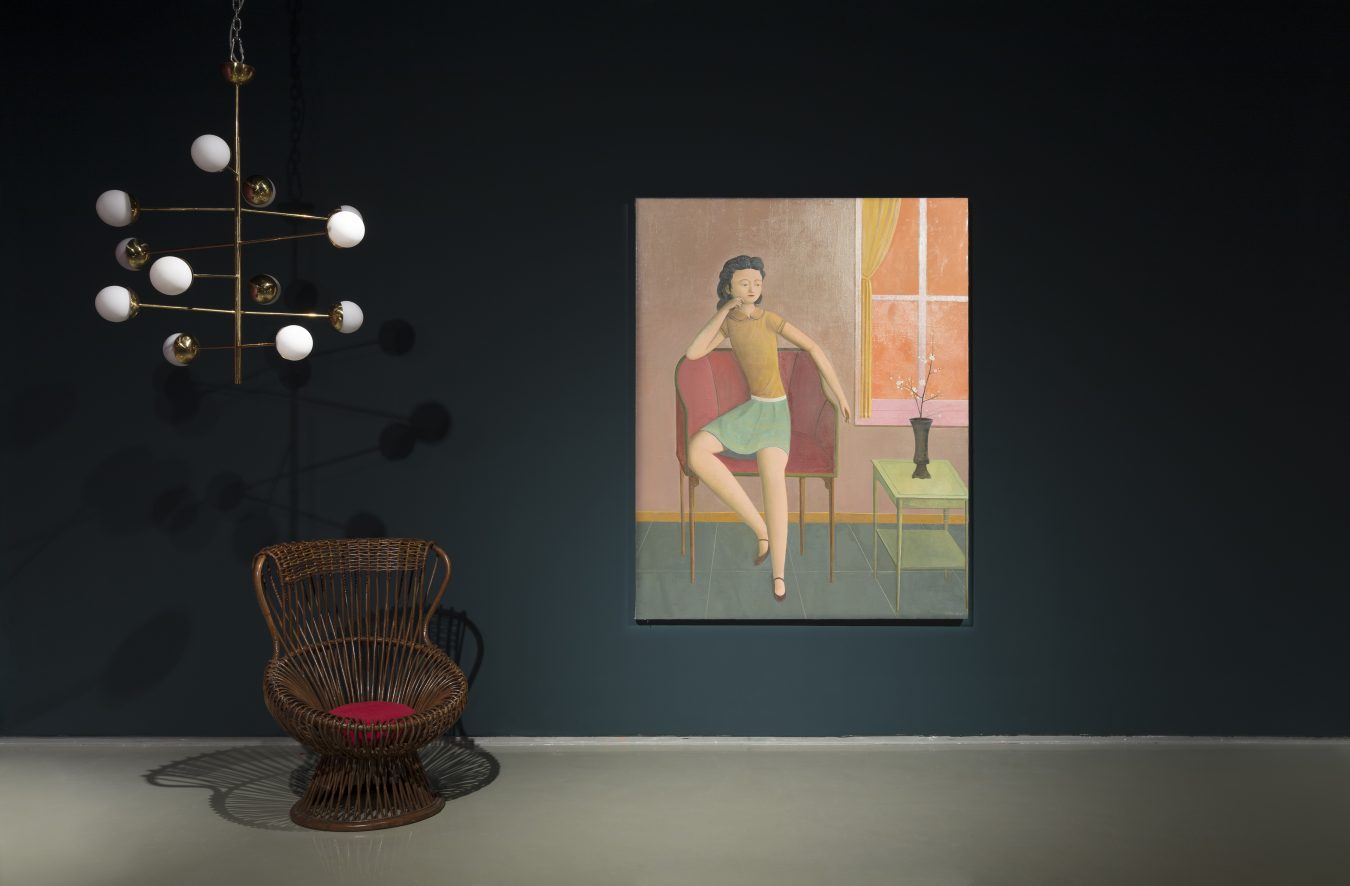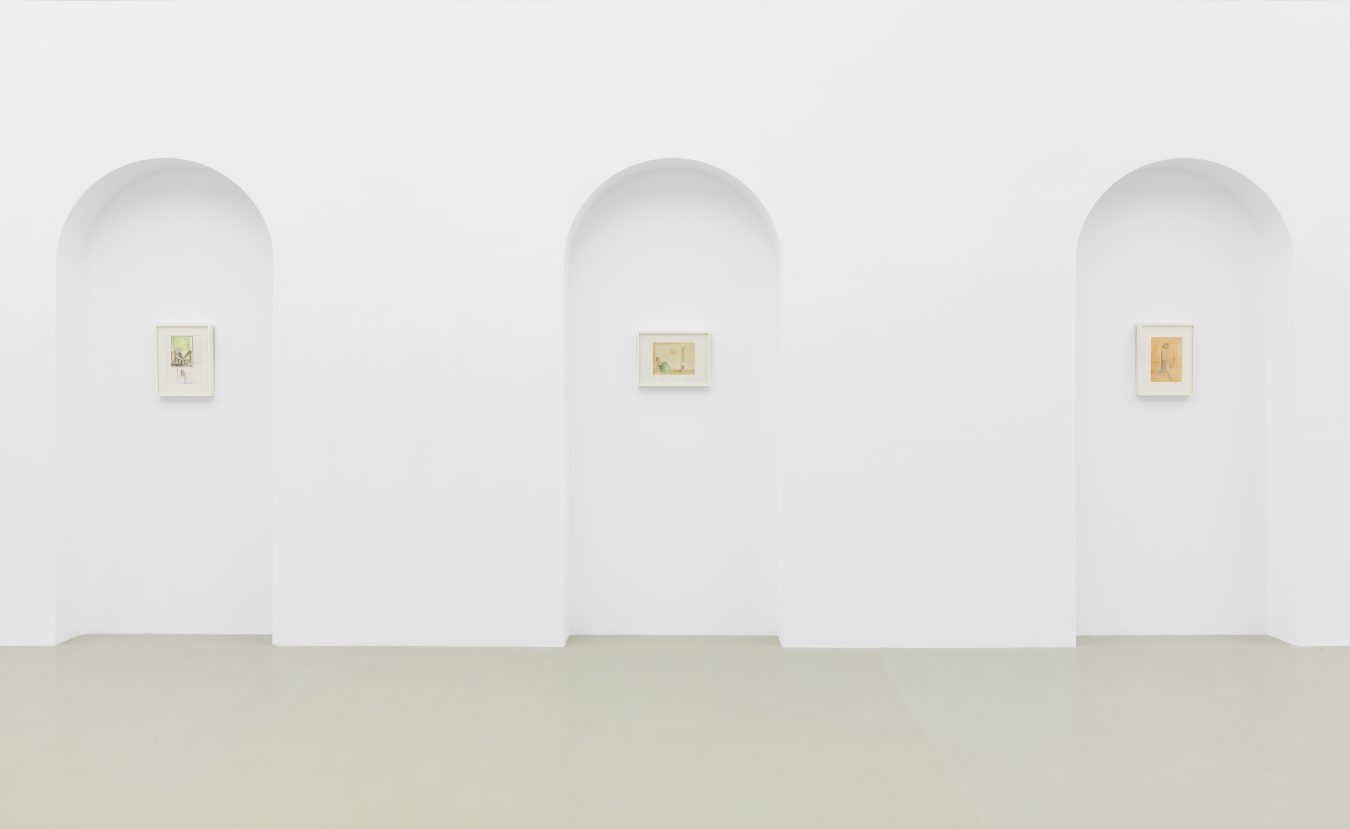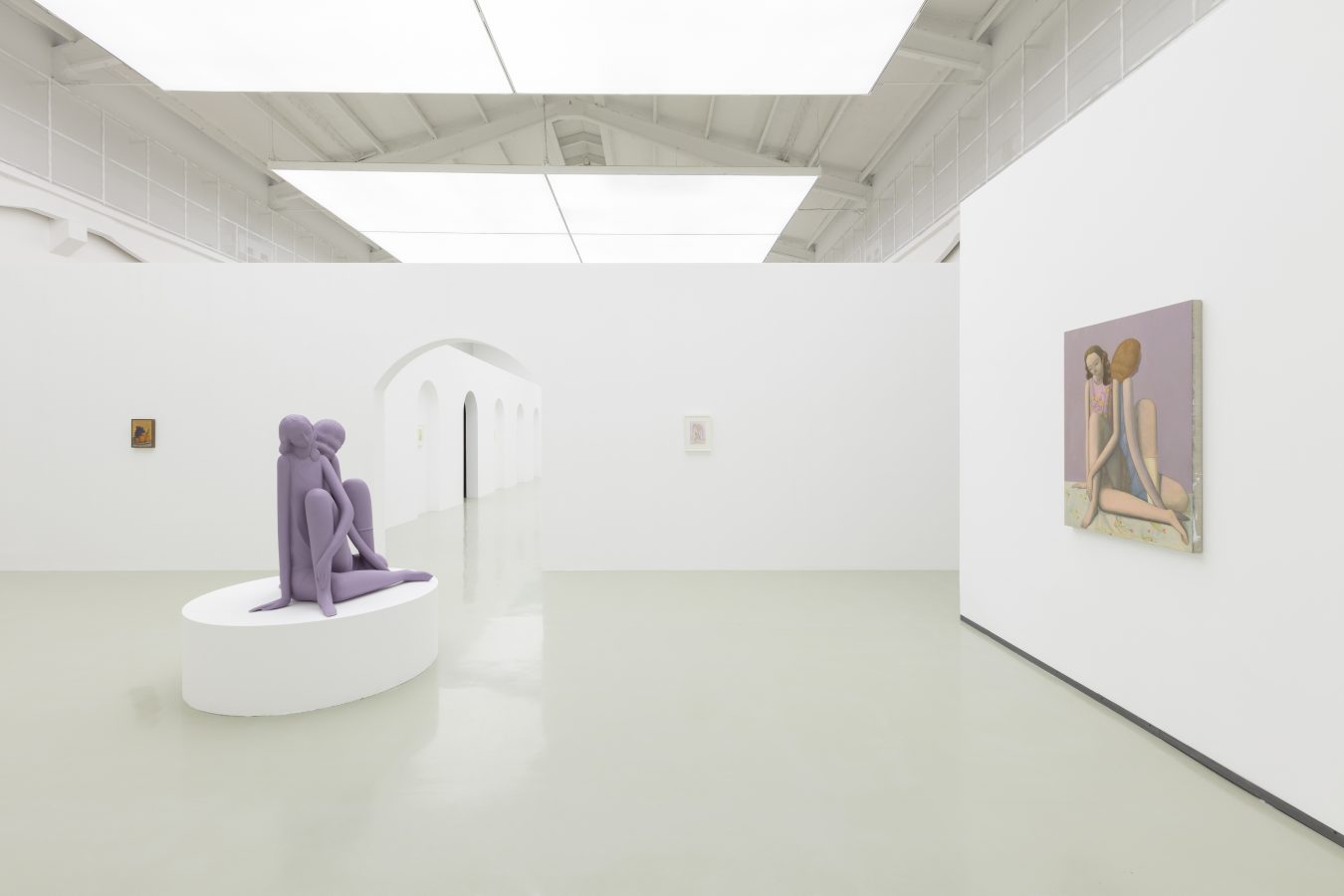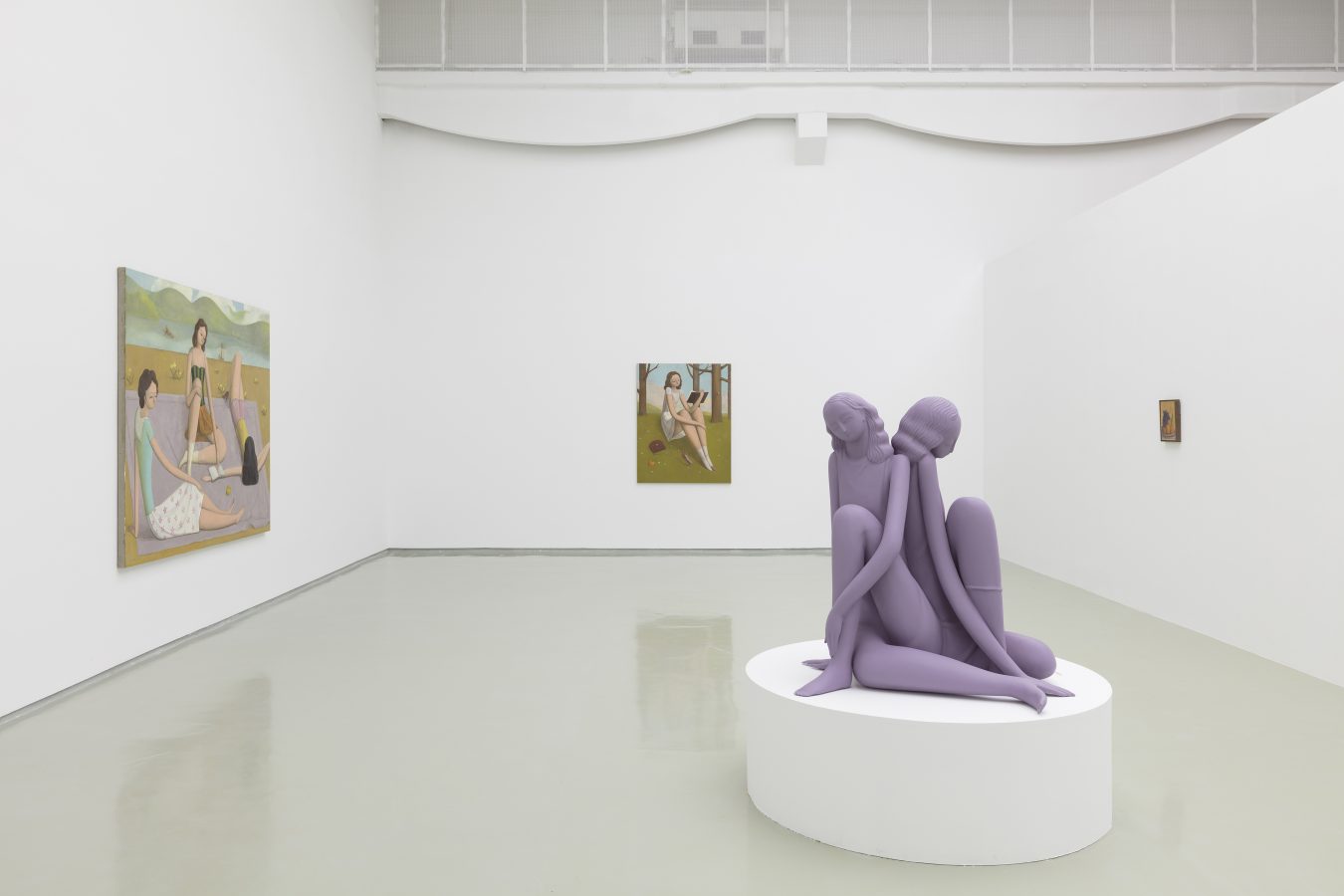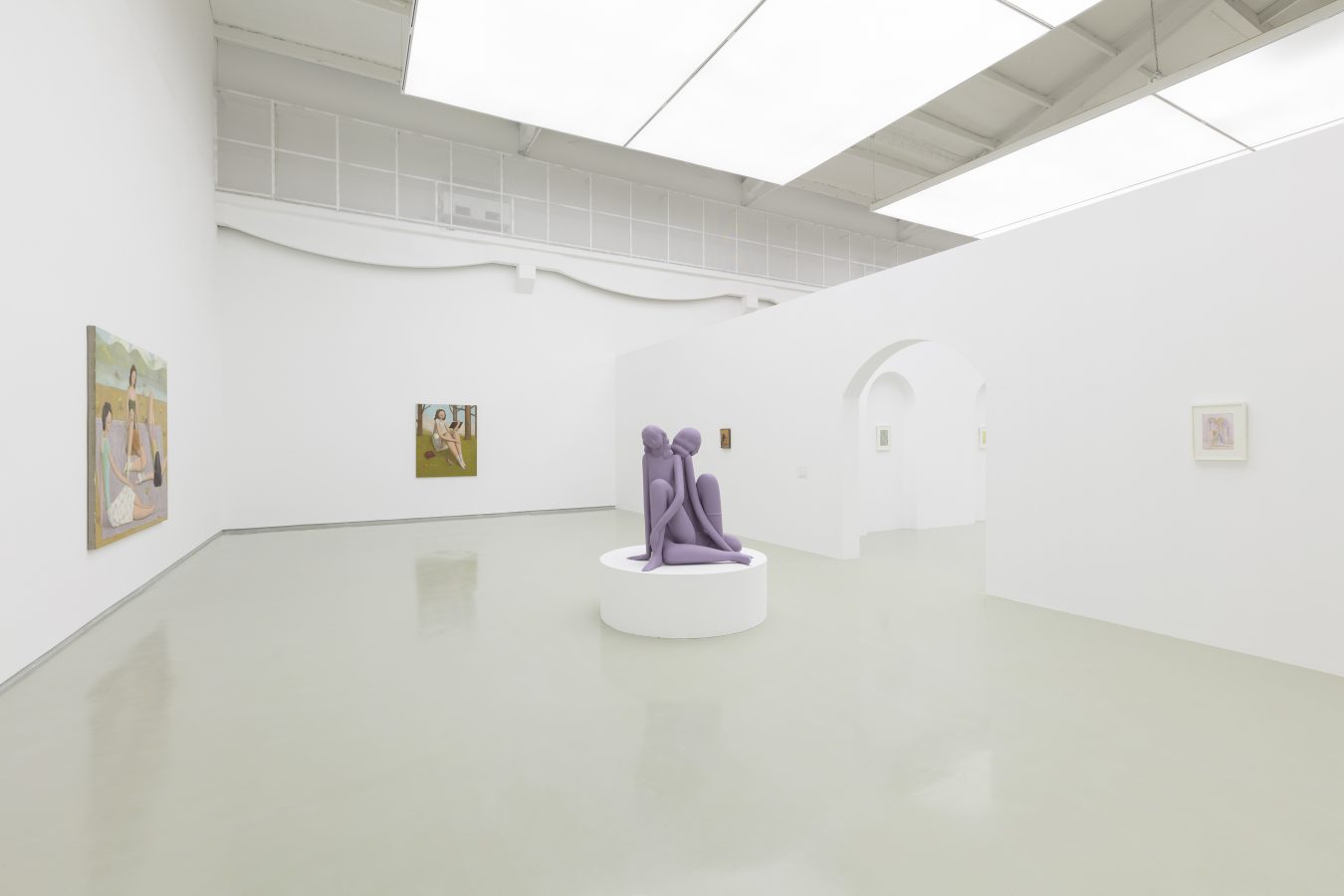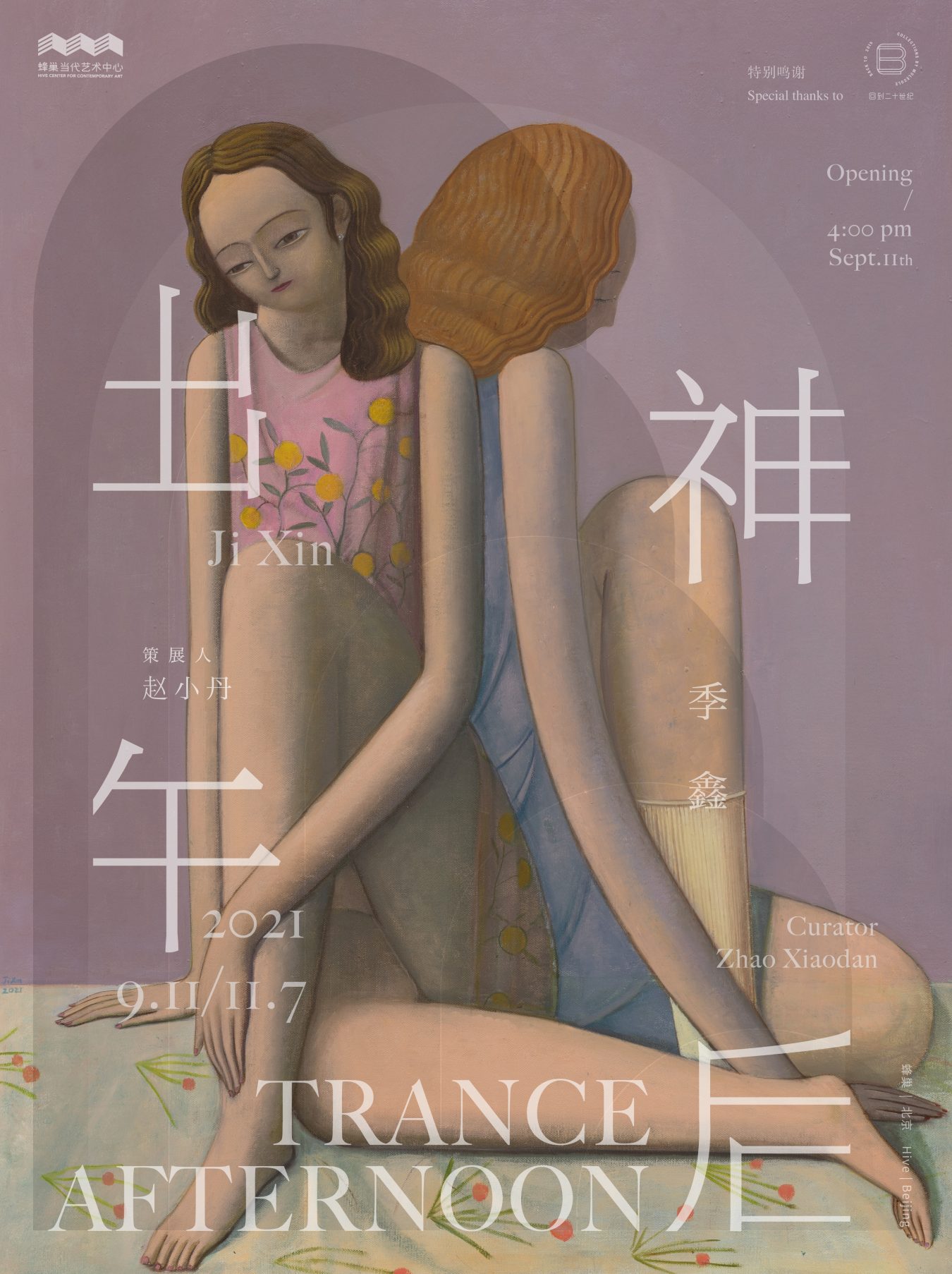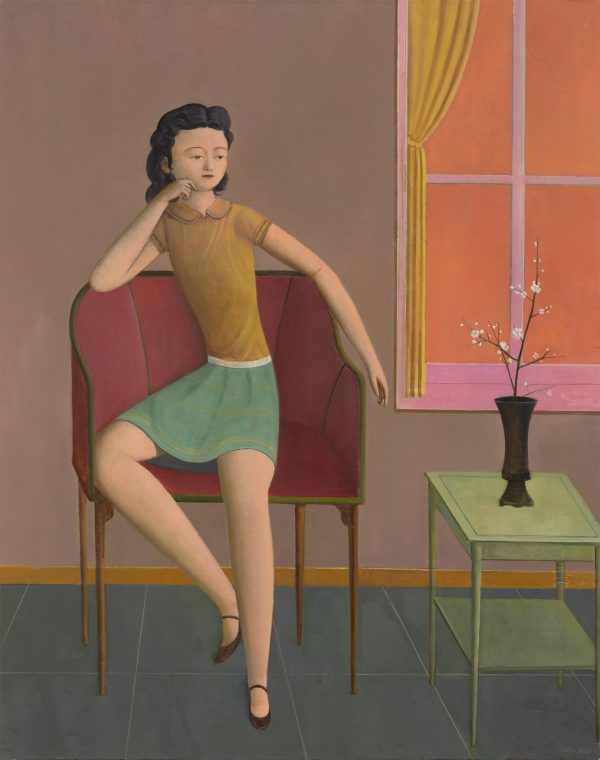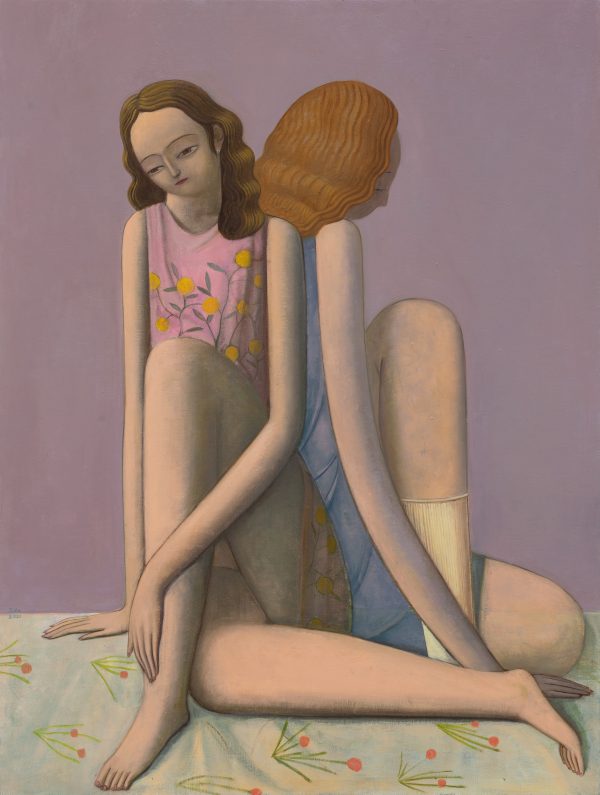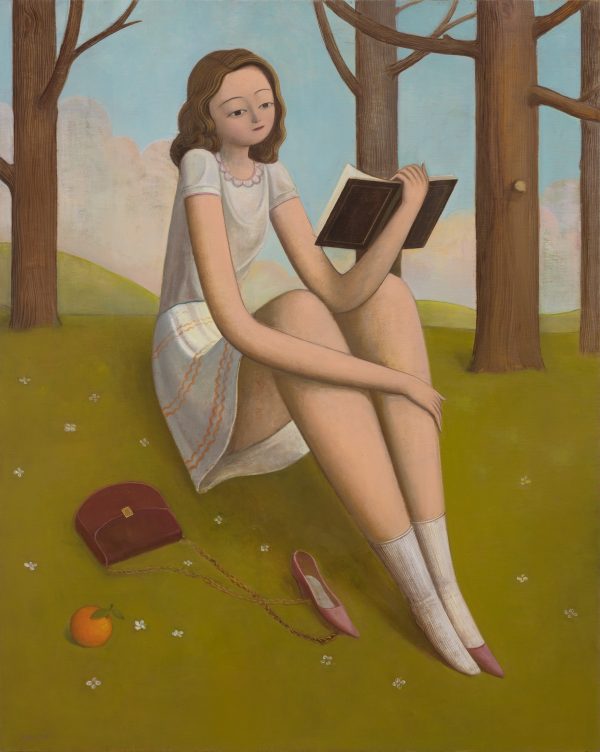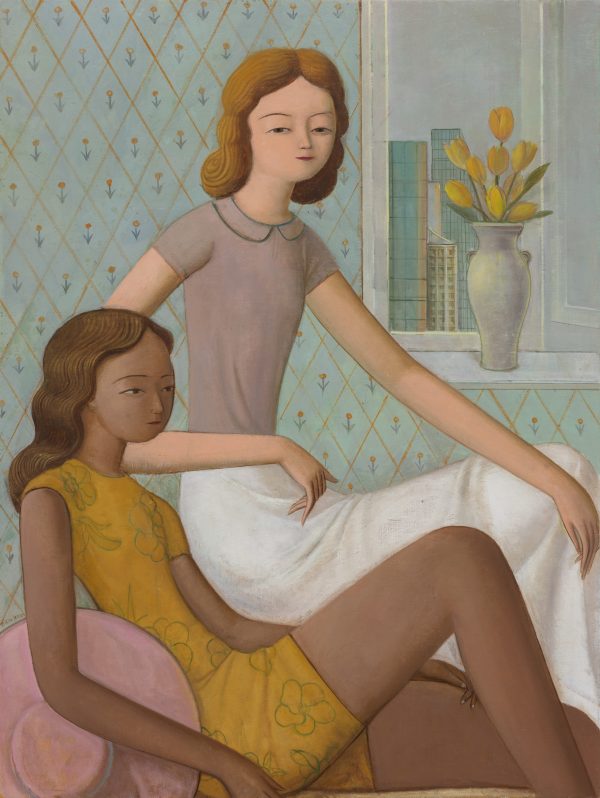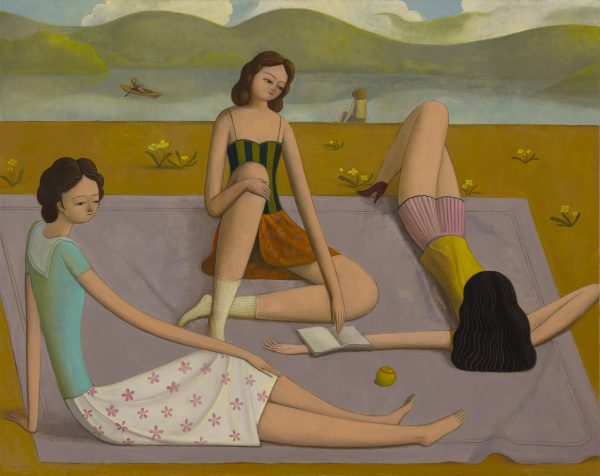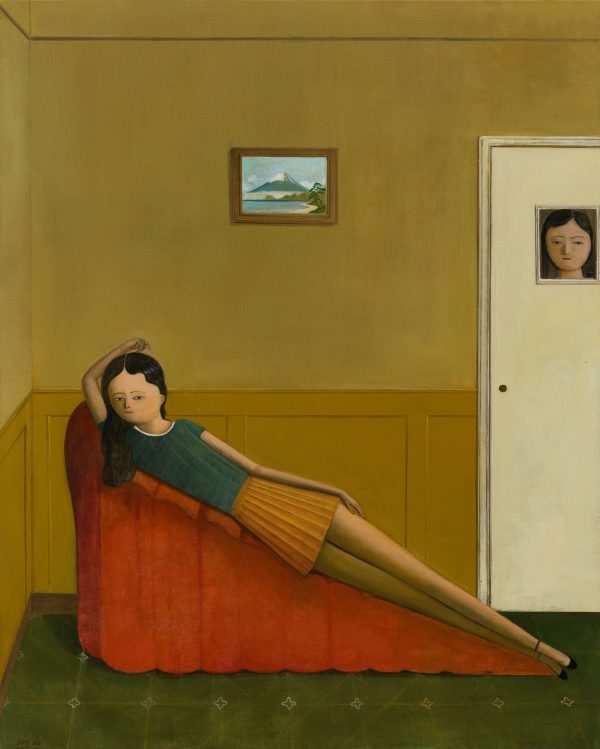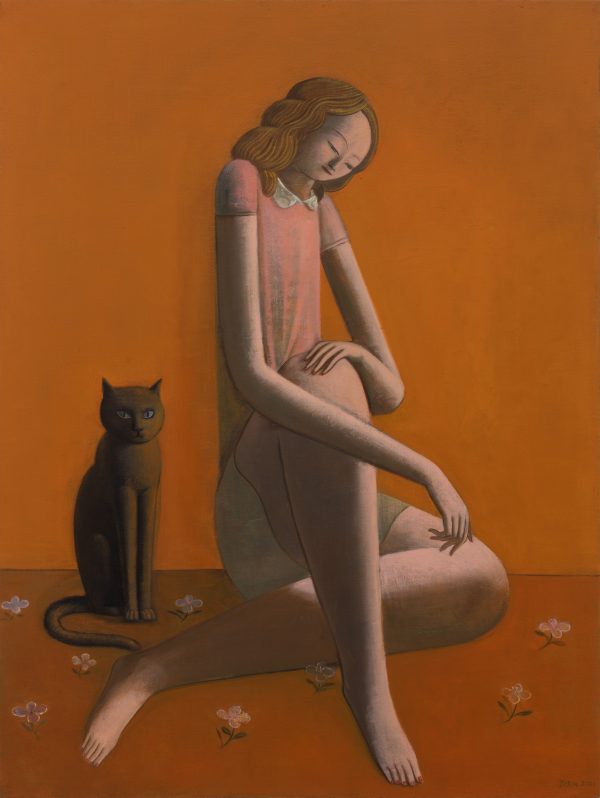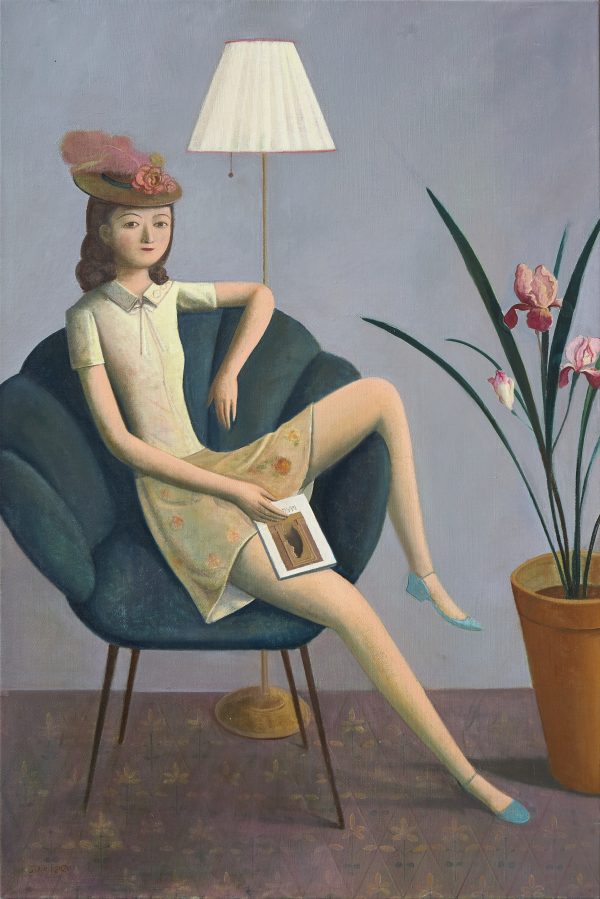Hive Center for Contemporary Art is excited to announce Ji Xin’s upcoming solo exhibition, “Trance Afternoon.” This exhibition will be on view at Gallery A from Sept. 11 to Nov. 7, 2021. “Trance Afternoon” is curated by Zhao Xiaodan. This is Ji Xin’s fourth solo exhibition at Hive after “Nightingale (2014),” “Interval (2016),” “Vanished Eden (2018),” featuring his latest work from the past two years.
The nostalgia manifested in Ji Xin’s work is a mourning of the idealized past. His work encompasses the ambiance of self-sufficiency and tranquility and the expression of idealized femininity, hinting at a past fantasized in retrospect. This past is redemption and liberation from reality, escaping from it while displaying internal confinement. Bergson believes that one’s self is not a static objective but a dynamic process filled with change. In Greek, ekstasis is considered a removal from self; Plotinus describes it as a state of transformation. From a neurological perspective, during this mechanism, in which transient hypofrontality of the prefrontal cortex is accompanied by an unconscious, intense activity, the nerves are interwoven and interconnected, producing an experience at a rate a thousand times faster than the normal state of the agency. This experience offers an entrance outside of time or the depths of the present.
The figures of Ji Xin’s work stroll from “Interval” to the front of the stage. The pandemic’s impact on the trajectory of life is intertwined with the shifting in the appearance of Ji’s work, mixed with his understanding of the colors of life. A bright, dazzling tone of the Middle Ages miniature is attached to a body that is both mundane and divine. Undeniably, the balanced classical composition and active control of the color scale constitute a causality between Renaissance Italian and Dutch paintings and Ji Xin’s work. In his work, the artist retains the clarity and cohesion of borderline while renouncing the excessive transitional mid-tone of the classical ambiance in his portrayal of figures. Here, Ji Xin does not aim to depict a veristic reality but a being with a complete outline, i.e., a symbol.
Along the passage of Ji Xin’s practice, we enter a trance that keeps blossoming in reality. This experience is like reading a novel, where the elements provided in the text are transformed by the reader into concrete existence, a provisional sanctuary, a mirror, or an experience of self-verification after simulating the existence of the other. The brief moment that most people endure through narrow passages is, for Ji Xin, a vast landscape worth exploring. Almost out of his desire for certainty, Ji Xin painted the rooms and the symbolism of the rooms just right; everything is within reach. Painting becomes a reality created by him in seek of the truth through the haze of modernity. In this process, the distinctively personal, increasingly pellucid world introduced by the artist elaborates in front of us.
